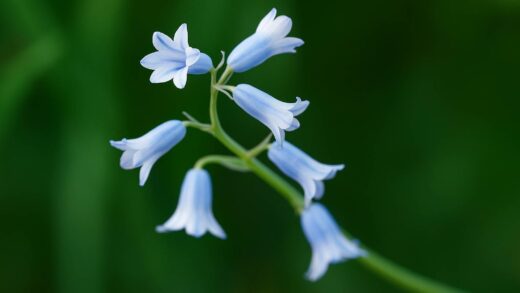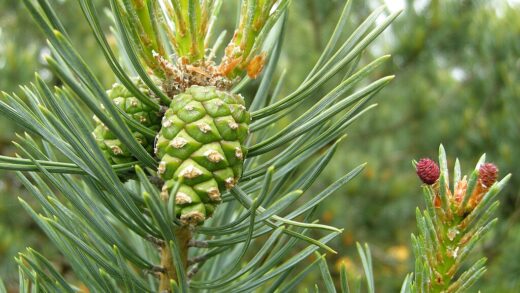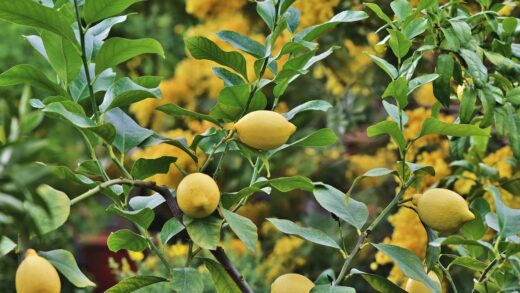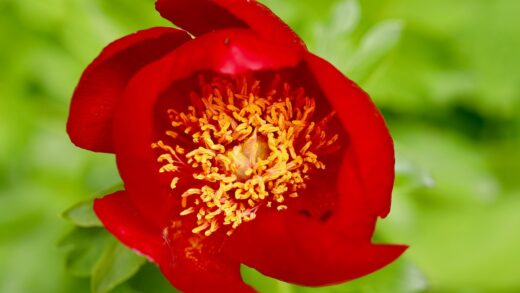Understanding the proper techniques for pruning and cutting back the Taiwanese toad lily is a simple yet important aspect of its annual care cycle. Unlike many other perennials that may require complex pruning to control their size or encourage reblooming, the needs of the toad lily are quite straightforward. The primary reasons for cutting this plant are for aesthetic cleanup at the end of the season and for maintaining plant health by removing dead or damaged material. There is no need for intricate shaping or mid-season shearing. By following a few basic principles, you can ensure your toad lily remains tidy, healthy, and ready to put on its spectacular floral show each autumn.
The main pruning activity for a Taiwanese toad lily is the annual cutback after it has finished its growing season. This should be done in the late autumn or early winter, after the first hard frost has caused the foliage and stems to die back completely. It is important to wait until the frost has killed the top growth, as the plant will be retracting valuable energy from the leaves and stems back into its underground rhizomes for winter storage. Cutting the plant back while the foliage is still green would interrupt this vital process and could weaken the plant for the following season. Once the stems and leaves are brown and withered, they have served their purpose.
To cut the plant back, use a clean, sharp pair of pruners or garden shears. Cut all of the stems down to about one to two inches from the ground. This process serves several important functions. Aesthetically, it removes the dead, unsightly foliage and gives the garden bed a clean and tidy appearance for the winter months. More importantly, from a plant health perspective, it removes old plant material that could otherwise provide a place for pests to lay their eggs or for fungal diseases to overwinter. Good garden sanitation is a key component of preventing future pest and disease problems.
After cutting back the plant, it is an ideal time to apply a layer of winter mulch. With the top growth removed, you have easy access to the crown of the plant. Spreading a two to four-inch layer of shredded leaves, pine straw, or other light, airy mulch over the area will help to insulate the dormant rhizomes from the harsh conditions of winter. This combination of cutting back the dead foliage and applying a protective mulch layer is the primary “pruning” maintenance that a Taiwanese toad lily requires.
There is generally no need for any significant pruning during the growing season. The plant has a naturally graceful, arching habit that should be allowed to develop without interference. Pruning or shearing the plant mid-season would likely remove the developing flower buds, which form in the leaf axils along the upper parts of the stems. Therefore, any cutting during the summer would be counterproductive and would sacrifice the beautiful autumn floral display that is the main reason for growing this plant.
More articles on this topic
Deadheading and spent blooms
The practice of deadheading, which is the removal of spent flowers, is a common task for many perennials as it can encourage a new flush of blooms and prevent the plant from wasting energy on seed production. However, for the Taiwanese toad lily, deadheading is generally not necessary or particularly beneficial. The plant has a defined and relatively short blooming period in the late summer and autumn, and removing the spent flowers will not stimulate it to produce more blooms within that same season. Its flowering is determined by day length and temperature cues, not by the removal of old flowers.
Furthermore, the individual flowers of the toad lily are numerous and open sequentially along the stems over a period of several weeks. Deadheading them one by one as they fade would be a tedious and impractical task. It is better to simply enjoy the overall display as it evolves, allowing the fresh flowers to take center stage while the older ones fade naturally. The overall impression of the plant in bloom is not significantly diminished by the presence of a few spent blossoms among the new ones.
Some gardeners might choose to let the flowers go to seed, either for the purpose of collecting the seeds for propagation or simply for winter interest. The seed pods that form after the flowers fade have a certain structural beauty and can add to the texture of the autumn and early winter garden. If you do wish to collect seeds, allow the pods to ripen on the plant until they turn brown and begin to split open. At this point, you can harvest them and store the seeds in a cool, dry place.
If you are a meticulous gardener who prefers a perfectly tidy look, you can, of course, remove the flower stalks after the entire blooming cycle is complete. Once all the flowers on a particular stem have faded, you could snip that stem back. However, since the foliage itself remains attractive, most gardeners prefer to leave the plant intact until the entire plant is cut back to the ground after the first hard frost. This approach is simpler and allows the plant to complete its natural lifecycle without unnecessary intervention.
More articles on this topic
Pruning for health and damage control
While routine pruning during the growing season is not required, there are occasions when some selective cutting may be necessary for the health of the plant. Throughout the spring and summer, it is good practice to inspect your toad lily for any signs of damage or disease. If you notice any leaves that are heavily spotted, yellowing, or showing signs of a fungal infection like botrytis or powdery mildew, it is best to remove them promptly. Use clean pruners and cut the affected leaf off at its base where it joins the stem.
Similarly, if a stem becomes broken due to wind, foot traffic, or animal activity, it should be pruned back cleanly. A ragged, torn stem can provide an easy entry point for diseases. Make a clean cut with your pruners just below the break. If the break is low down on the stem, you may need to remove the entire stem back to its point of origin at the base of the plant. Removing damaged material not only improves the plant’s appearance but also helps to prevent potential health problems from developing.
When you do any selective pruning for health reasons, it is crucial to practice good tool hygiene. Sterilize your pruners before and after making cuts, especially if you are dealing with diseased plant material. You can do this easily by wiping the blades with a cloth soaked in isopropyl alcohol or a 10% bleach solution. This simple step prevents you from accidentally transferring pathogens from a diseased leaf or plant to a healthy one.
In very dense, established clumps of toad lilies, you might consider thinning out a few stems in the center of the plant if air circulation appears to be poor. This can help to increase airflow and light penetration into the interior of the clump, which in turn can reduce the likelihood of fungal diseases that thrive in stagnant, humid conditions. This is not a required annual task but can be a useful corrective measure if you notice signs of disease in an overcrowded plant. Simply cut a few of the weakest or most crowded stems back to the ground in the spring.
Timing the annual cutback
The timing of the main annual cutback is a topic with some minor debate among gardeners, but the overwhelming consensus is to wait until late autumn or early winter. The key trigger for this task is the first hard frost that kills the top growth of the plant. A light frost may just nip the edges of the leaves, but a hard frost (where temperatures drop well below freezing for several hours) will cause the entire plant to wilt, turn brown, and collapse. This is the clear signal that the plant has entered dormancy for the winter.
There are several important reasons to resist the urge to cut the plant back too early, for example, right after it finishes flowering. In the period between the end of flowering and the first hard frost, the plant is still actively photosynthesizing and storing energy in its rhizomes. The leaves and stems are working to produce the carbohydrate reserves that will sustain the plant through the winter and fuel its growth next spring. Cutting it down prematurely curtails this critical energy storage process and can result in a weaker plant in the following year.
Some gardeners prefer to leave the dead stems and foliage standing over the winter to provide some minor structural interest in the garden and to trap insulating snow around the plant’s crown. While this is a valid approach, especially in naturalistic garden settings, there is a slightly increased risk of providing shelter for overwintering pests or diseases. For most garden situations, a clean cutback in late autumn is the preferred method for both aesthetics and plant hygiene.
If you live in a region with very mild winters where the plant’s foliage may not be completely killed back by frost, you can perform the cutback in late winter or very early spring, just before new growth begins to emerge. In these climates, the old foliage can look tattered and worn out by the end of winter. Cutting it back at this time clears the way for the new shoots to emerge and tidies up the plant for the new growing season. The key is to complete the cutback before the new growth gets too tall.
Tools and techniques
For all pruning tasks related to the Taiwanese toad lily, having the right tools will make the job easier and better for the plant. A pair of sharp, clean bypass pruners is the most essential tool. Bypass pruners have two curved blades that pass by each other like a pair of scissors, making a clean, precise cut without crushing the plant’s tissues. This is preferable to anvil pruners, which have a single blade that closes against a flat surface and can crush the stem. For cutting back the entire clump at the end of the season, a pair of garden shears can make the job quicker.
Before you begin any pruning, ensure your tools are sharp and clean. Sharp blades make clean cuts that heal more quickly and are less likely to become infected. Dull blades can tear or crush the stems, creating ragged wounds that are more susceptible to disease. Cleaning your tools, especially between plants, is a crucial step in preventing the spread of pathogens. A quick wipe with rubbing alcohol is an effective and easy way to sterilize your pruner blades.
The technique for cutting back the entire plant is simple. Gather the stems of a clump in one hand and make a single cut a few inches above the ground with your shears or pruners. For selective pruning of individual leaves or stems, trace the stem back to its point of origin and make a clean cut. Avoid leaving long, unsightly stubs. When thinning a clump, select the stems you want to remove and cut them as close to the ground as possible.
After pruning, especially the final cutback in autumn, proper disposal of the plant debris is important. If the plant material is healthy, it can be added to your compost pile. However, if you have removed any leaves or stems that showed signs of disease, do not compost them. Instead, dispose of them in your municipal yard waste or burn them (where permitted) to ensure that the pathogens are destroyed and do not reinfect your garden the following year. This final step completes the annual pruning cycle and sets the stage for a healthy plant.


















